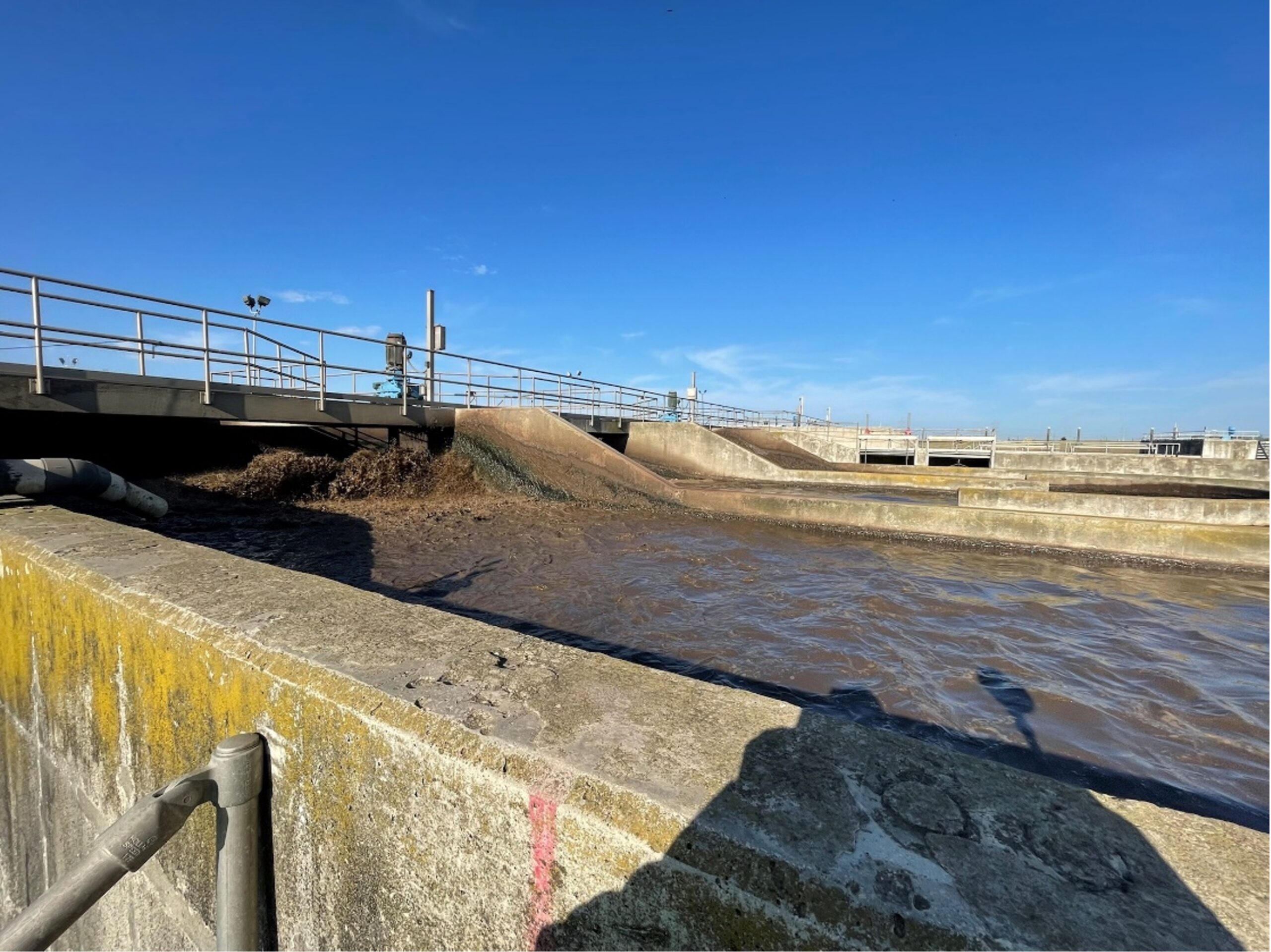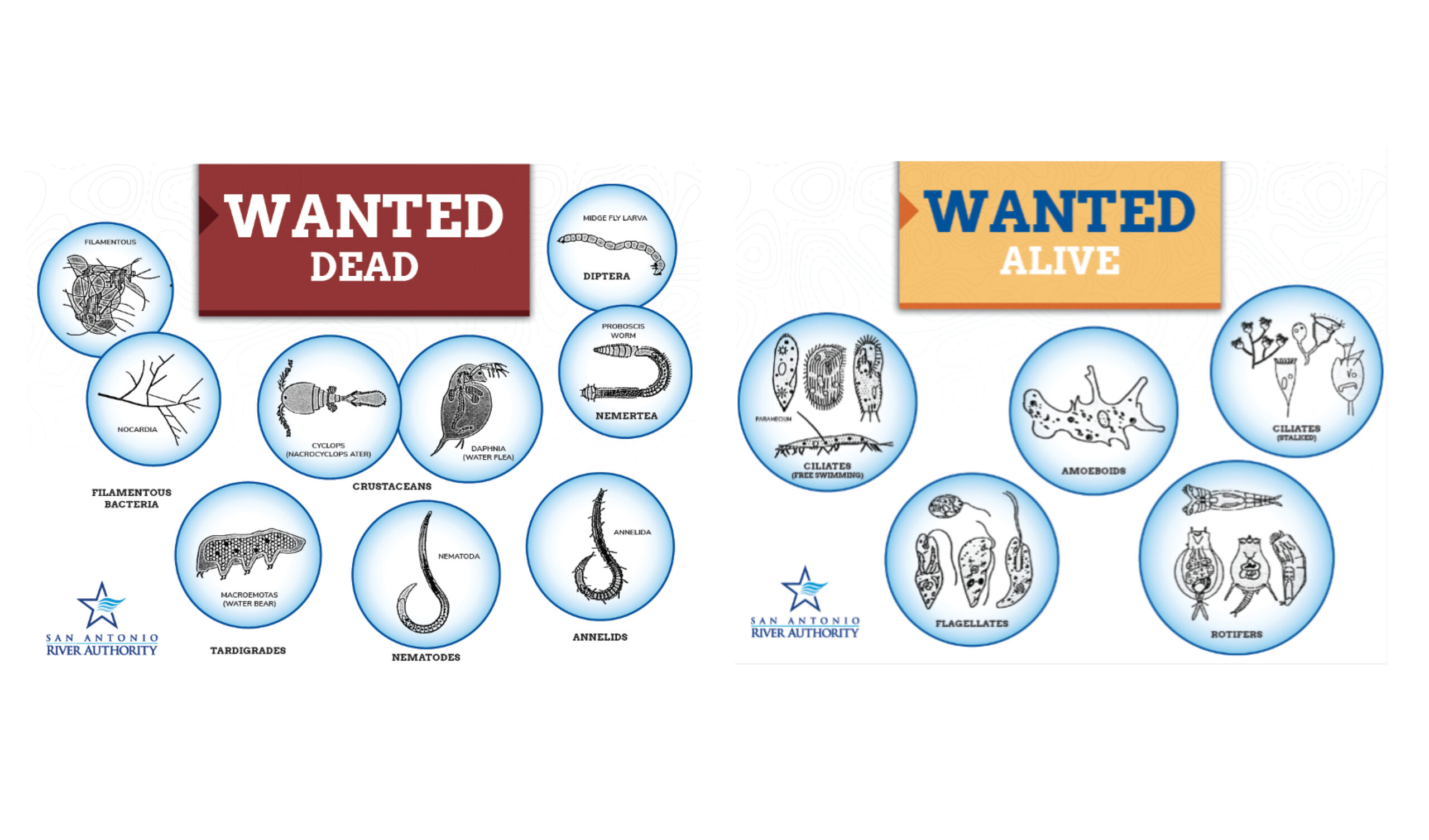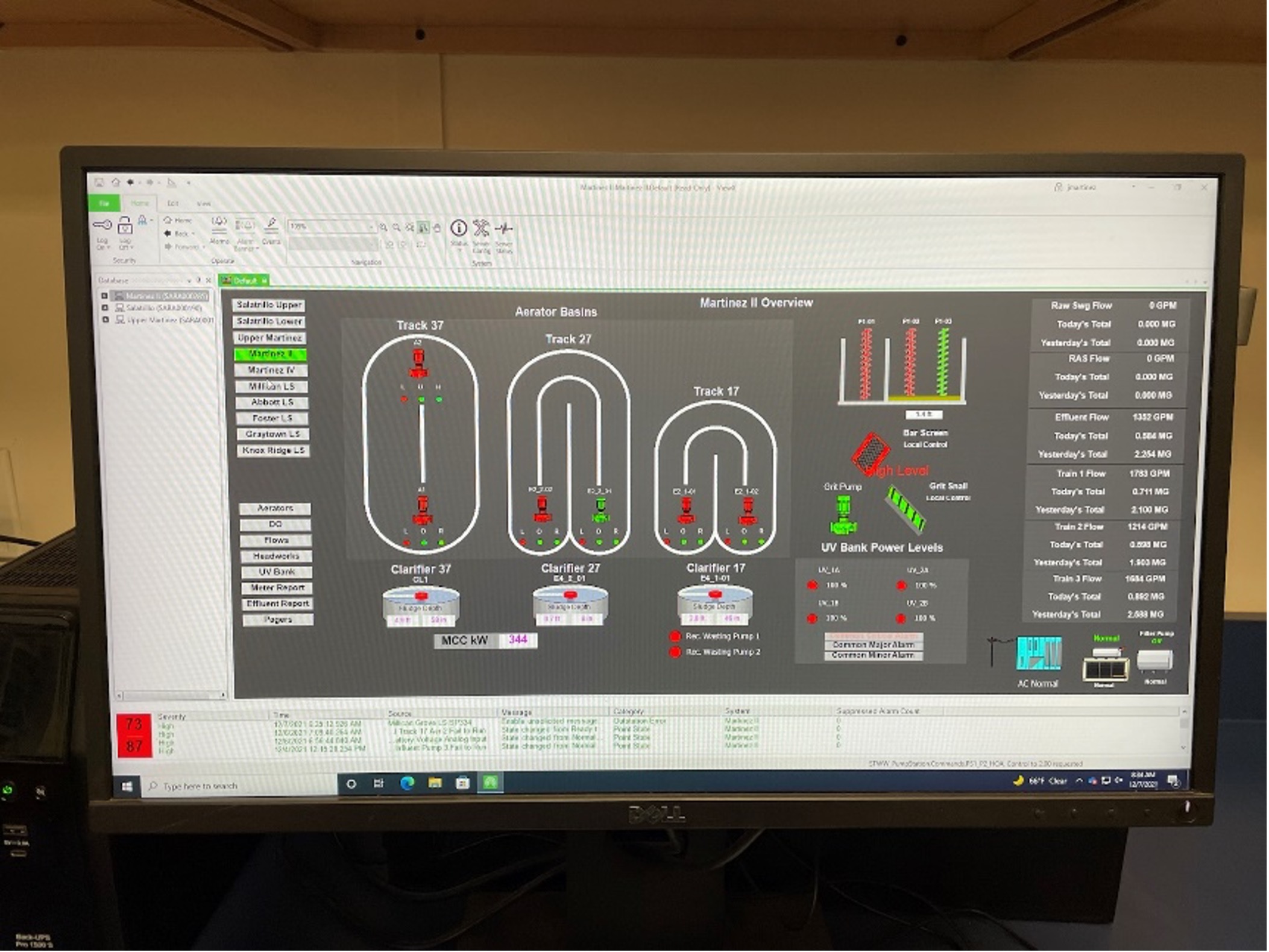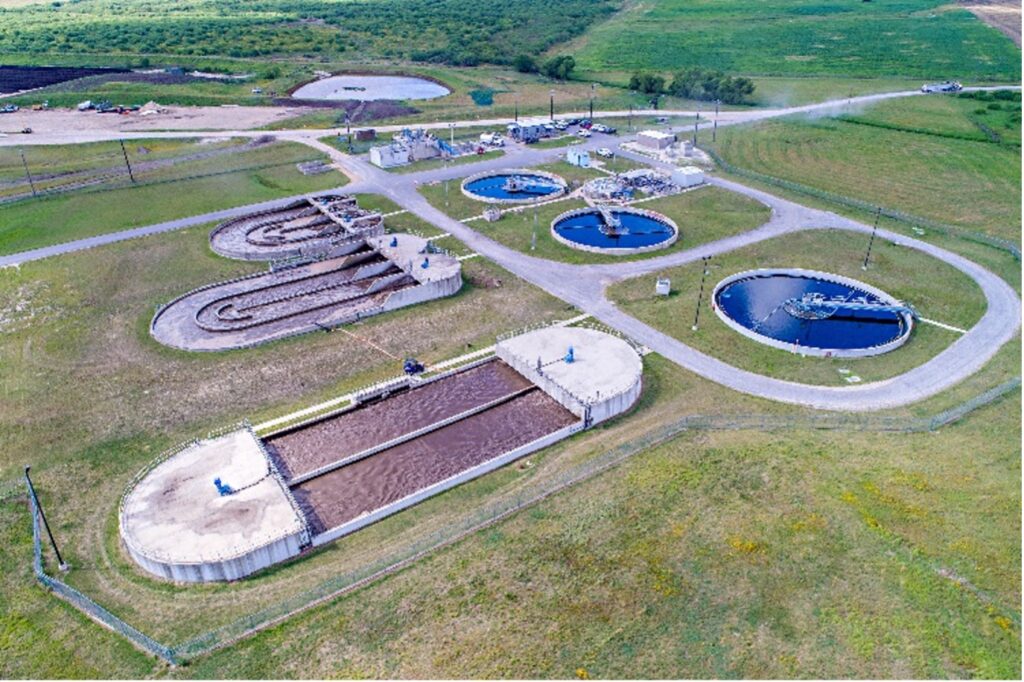Last Updated on January 30, 2024
Welcome to our third installment of the San Antonio River Authority (River Authority) Utilities series. As we outlined in the introduction to this series, we are sharing what each team within our wastewater utility does, why it is essential, and how it impacts you!
Thus far in our series we have learned the role that two River Authority Utilities teams play in this process. The Development Team works with new sewer infrastructure and the Collections Crew helps maintain the sewer pipelines. In this installment, we will be featuring the Operations Team!
What does the Operations Team do?
On a daily basis, members of the Operations Team run and report wastewater tests and monitor the age of the bacteria used in the treatment process. Treating wastewater is a 24/7 job! This ensures the cleanliness of both the water being discharged back into the environment and the wastewater treatment plant (WWTP) itself.
Understandably, treating wastewater is governed by many rules and regulations to ensure the health and safety of the public. In Texas, the Texas Commission on Environmental Quality (TCEQ) is responsible for issuing permits for WWTPs and licenses for individual operators. Operators routinely test the water for parameters including E.coli bacteria, dissolved oxygen, PH, ammonia, nitrates, turbidity, chlorine, total suspended solids, and carbonation biochemical oxygen demand. Test results are reported to TCEQ regularly, and they are used to ensure there is process control.
Right: A River Authority employee collects samples of wastewater from a clarifier. Left: An operator begins a test in an onsite lab.
What is process control, you ask? It is monitoring and adjusting to ensure the health of the biological bacteria used in the treatment process. This is done by checking the testing results (mentioned above), using visual cues, or studying wastewater samples under a microscope. For example, suppose ammonia levels are high? In that case, it cues the operator that more oxygen needs to be added to the treatment process.

Aerators add oxygen to wastewater in the aeration basin, where oxygen levels can be monitored and maintained

Shown above are examples of the microorganisms operators look for when examining wastewater under a microscope. Finding the organisms in each category ensures that the wastewater is properly treated.
Another part of process control is monitoring the age of the bacteria. Younger microorganisms “eat” or treat the water more ferociously, whereas older microorganisms work a little slower. For example: In the afternoon, when many people are getting home from work or school, there can be an increase in wastewater entering the plant. During these times, there needs to be a higher number of young microorganisms ready to treat the wastewater. An operator can encourage the growth of good microorganisms by removing the older ones. The remnants removed or left behind from the treatment process are called sludge. Fun Fact: Sludge can be composted, making the wastewater treatment process environmentally friendly in more ways than one.
How does the team ensure wastewater is treated around the clock?
Treating wastewater is a 24-hour, 7 days per week, and 365 days per year, type of job. Wastewater does not stop flowing into treatment plants at 5 pm or on holidays when many folks clock out. Fortunately, technology allows operators to be on call during evenings, weekends, and holidays. Operators use a smart device to monitor the plant through a software application called Supervisory Control and Data Acquisition or SCADA.

The monitoring software SCADA is displayed on a desktop computer.
Beyond Wastewater Treatment
The duties of the Operations team go well beyond ensuring that wastewater is treated around the clock. Operators help maintain the WWTP’s cleanliness to ensure a safe working environment for staff and visitors. Due to River Authority’s long history in wastewater operations, the team is often called on to assist wastewater partners in other communities. They also share the importance of proper wastewater treatment with members of the military, local colleges, recently graduated engineers, and local high schools, through tours of the WWTPs. The team has even supported recent university studies identifying COVID-19 in wastewater samples and has provided internships to college students to help them complete their degrees in Water Science. Through their vital services, the River Authority Utilities Operations team plays a critical role in ensuring our local creeks and the San Antonio River are safe, clean, and enjoyable for all.
Coming soon: Look out for the next series, where we will take a deep dive into the work of the Maintenance Team!
The River Reach is back!
River Reach is a quarterly, 12-page newsletter that is designed to inform the San Antonio River Authority’s constituents about the agency’s many projects, serve as a communication vehicle for the board of directors and foster a sense of unity and identity among the residents of Bexar, Wilson, Karnes, and Goliad counties.
If you wish to be placed on the mailing list for River Reach, please contact us or complete the form.





